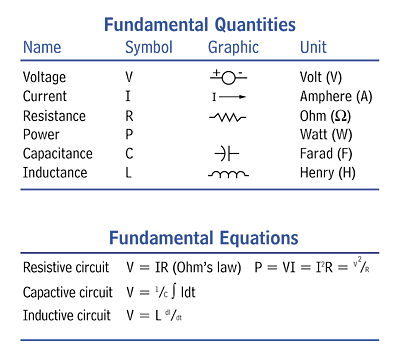
In order to make sense of the electrical theory that will be referenced in future columns, an electrical primer is necessary. Once the basics are covered, more in-depth electrical topics will be discussed, including:
- Standard system and equipment voltage ratings;
- NEMA and IEC enclosure classifications;
- National Electrical Code (NEC) requirements for temperature control wiring;
- Fire sprinkler protection of electrical rooms;
- NEC restrictions on ductwork and piping near electrical equipment;
- Motor-starting methods for reduced inrush current; and
- Third-party listing and labeling of electrical controls.
OK, on with the first lesson.
Definitions
The basic quantities of concern in all electric circuits are voltage, current, and power. Remember these three words and their definitions.Voltage: Electric potential energy, also called electromotive force (EMF), measured in circuits as a potential difference between two points.
Current: The flow of electrons through a conductor caused by a potential difference.
Power: The rate of use of electrical energy with respect to time.
Now, here are the basic circuit elements.
Source: A source of potential difference is required for any electrical circuit to operate. The source is usually a device that converts another form of energy into electrical energy. A battery operates on chemical energy, a generator on mechanical energy, and a photovoltaic cell on the energy of electromagnetic radiation.
Conductor: This is any material which has loosely bound-charged particles in its chemical structure which can conduct an electric current. The most commonly used conductors are metals, in which the outer valence electrons are shared between atoms and therefore are free to move under the influence of an electric potential. Dissolved ions in liquid solutions also make excellent conductors; conductivity is often used to measure the amount of dissolved solids in the water in boilers.
Resistor: This is a circuit element which dissipates energy in the form of heat when current flows through it. Example: an electric duct heater, in which ribbons or coils of metal having a fairly low conductivity (high resistivity) are heated to a high temperature by passing current through them.
Capacitor: This is a circuit element which stores energy in the form of an electric charge. As current flows through a capacitor, the stored charge builds a voltage across the terminals. If the circuit is interrupted, the charge and the voltage on the capacitor remain. If the terminals are then reconnected to a closed circuit, the stored charge will be dissipated as current flow.
Inductor: This is a circuit element which stores energy in the form of a magnetic field as current flows through it. Voltage developed across an inductor is proportional to the rate of change of current; therefore, it resists rapid changes in current. Inductors can be used to limit inrush currents and as noise suppression devices.
SUMMARY
By all means, review (and save for future reference) the fundamental electrical quantities and equations on this page. For instance, one should know the symbols for voltage, current, etc. These symbols will certainly be appearing in future columns.
Next month's topic will be dc circuit fundamentals and voltage drop. In the meantime, if you have any questions or if you have relevant electrical questions or topics that you would like considered for future columns, contact me by e-mail: Timothy Coyle, P.E..



